Dec 9, 2020 | News
TXSES welcomes three interns for 2021, all of whom are committed to helping TXSES achieve its mission.
“We couldn’t be more fortunate and excited to have these smart, talented students work with us in 2021,” said Pete Parsons, TXSES Executive Director. “With the upcoming legislative session, in addition to all the other projects we’ve got in the works, their energy, passion and spirit will be enormously helpful and an inspiration to us all.”
Meet the interns
 Wyatt Beaver is a University of Texas at Austin Plan II Honors and Government major. His studies as a government major have driven his interest in policy advocacy and policy affairs. Wyatt’s key areas of interest include water rights and environmental issues and the legislative process. “I’m driven by my humbling experiences growing up in a small rural area and am dedicated to pursuing a career in public policy.” Wyatt loves the outdoors; his favorite hobby is hiking. His most recent travel was to Alaska where he saw glaciers that have been around since the Ice Age.
Wyatt Beaver is a University of Texas at Austin Plan II Honors and Government major. His studies as a government major have driven his interest in policy advocacy and policy affairs. Wyatt’s key areas of interest include water rights and environmental issues and the legislative process. “I’m driven by my humbling experiences growing up in a small rural area and am dedicated to pursuing a career in public policy.” Wyatt loves the outdoors; his favorite hobby is hiking. His most recent travel was to Alaska where he saw glaciers that have been around since the Ice Age.
 Meghana Bommareddy is a sophomore at the University of Texas at Dallas, where she studies public affairs and international political economy. She also serves as a writer and production manager for a student-run podcast and as a researcher for a hyper-local policy think tank that advocates for change in the larger Dallas and Texas region. Originally from Michigan, she has been living in Texas for the last decade. In her free time, she likes reading, playing chess, and providing book recommendations.
Meghana Bommareddy is a sophomore at the University of Texas at Dallas, where she studies public affairs and international political economy. She also serves as a writer and production manager for a student-run podcast and as a researcher for a hyper-local policy think tank that advocates for change in the larger Dallas and Texas region. Originally from Michigan, she has been living in Texas for the last decade. In her free time, she likes reading, playing chess, and providing book recommendations.
 Jack Maedgen is a sophomore Government and History major at the University of Texas and an Austin native. He’s been a part of the University Interscholastic League (UIL) and the Texas Orator. “I’m always striving to make a positive impact in my community which is why I am more than excited to play a role in promoting the TXSES vision.” Jack loves spending time outdoors, reading, writing and watching soccer.
Jack Maedgen is a sophomore Government and History major at the University of Texas and an Austin native. He’s been a part of the University Interscholastic League (UIL) and the Texas Orator. “I’m always striving to make a positive impact in my community which is why I am more than excited to play a role in promoting the TXSES vision.” Jack loves spending time outdoors, reading, writing and watching soccer.
Dec 9, 2020 | News
by Roger Duncan
I do not need to spend time to convince readers of this newsletter that solar power is the future of electric generation. But the way we generate that power will include many more technologies than the solar panels we are putting on rooftops today. Indeed, I expect solar panels and coverings to be ubiquitous and very cheap. For many applications, and I know I tempt the gods here, it will be too cheap to meter. Let’s take a tour of the changes we can expect over the coming decades.
First, the conversion efficiency of solar panels will significantly improve. Although PV technology was first demonstrated in 1883, the conversion efficiency of photons into electricity has been slow to improve. Rooftop panels still have a conversion efficiency under 25 percent and only 41 percent has been achieved in the labs. A new technology is needed to make a significant leap in efficiency.

Source: Chemistry World
That will probably be accomplished with carbon nanotubes. Carbon nanotubes could concentrate solar energy 100 times more than regular PV. Carbon nanotube antenna technology can theoretically achieve 80 percent to 90 percent conversion efficiency. We can expect building-integrated photovoltaics (BIPV) and mass application technologies to cover much more than rooftops. Solar windows are probably the next application.
Solar Windows
SolarWindowTM Technologies uses organic photovoltaics (OPV). In 2017, the company licensed its spray-on coating process to Triview Glass Industries. A 50 percent transparent window could produce 50 watts of energy per square meter. However, stability and degradation are problems with OPV. Quantum dot technology could solve that problem. A semiconducting nanocrystal can fluoresce and be embedded in transparent material within a solar window to form a luminescent solar concentrator. Trapped light can then be redirected to a nontransparent solar cell on one edge of the window. The companies Glass to Power in Italy and Physee in the Netherlands both use this technology.

Image credit: Onyx Solar
The largest PV window installed as of late 2019 was a skylight in a London office building that was produced by the Spanish company Onyx Solar. Onyx Solar uses lasers to remove the opaque silicon layer and back contact from thin-film solar panels to make them more transparent. The company also has installations in the NBA’s Miami HEAT American Airlines Arena in downtown Miami and agreed to install the world’s largest PV skylight in the Bell Works building in New Jersey.
Solar Coverings
Three types of solar paints are in development. One type absorbs moisture from the air and uses solar energy to produce hydrogen. A second uses quantum dot technology and could be up to 11 percent more efficient than traditional solar panels. Scientists at the National Renewable Energy Laboratory (NREL) have developed a quantum dot solar cell with 13.4 percent efficiency, surpassing the 10 percent efficiency that many experts consider minimal for the commercial viability of solar paints.

Source: NREL
And assuming that the durability and a few other issues with perovskite solar technology will be solved, spray-on solar paint will be available. These types of solar paint have the potential to expand solar power generation to wall coverings, vehicles, appliances and many other surfaces. The problem with the paints so far is the low conversion efficiency, but the potentially low cost and ease of application will eventually spread this technology everywhere.
Solar coverings may not always be used for the generation of electricity but as an energy efficiency measure. A new type of solar paint could help cool homes. The paint, developed by the Israel-based start-up SolCold, absorbs heat from the sun and re-emits it as higher-frequency light, producing a net cooling effect. According to simulations, applying the paint to the roof of a home could make a top-floor room feel up to 10 degrees C cooler. Shopping malls and stadiums are expected to be among the company’s first customers.
Many stadiums, parking garages, reservoirs, warehouses and other buildings could become primarily power plants, because of their relatively low energy consumption and large surface areas. In the future, it may be common for such buildings to form bilateral power contracts with nearby commercial office and retail buildings.
Some even foresee solar power sources developed in concert with and in nature. Synthetic “solar trees,” such as those in Singapore, could dot our landscape, intermingled with organic plants that may also be hosting integrated energy-harvesting technology. Landscapes may be offering energy, life-giving oxygen and natural beauty in one hybrid ecosystem.

Mohammed bin Rashid Al Maktoum Solar Park, United Arab Emirates. Image: Arabian Business
Utility-scale solar
Even though the future will see ubiquitous solar on buildings, appliances and all sorts of surfaces, the main source of electrical power in the future will probably come from utility-scale solar produced in the world’s great deserts.
Electric transmission lines using advanced superconducting materials could connect the solar power potential of the Sahara in North Africa to the European continent and the rest of Africa. In fact, just one to two percent of the Sahara covered with solar could power the entire planet. The great deserts on each continent – Arabian, Sahara, Gobi, Victoria and Mojave – could easily power the world through an internationally connected grid. Some even envision huge, replicating solar “breeder” plants producing new solar PV on-site, essentially growing the solar plant while simultaneously producing renewably sourced energy.
It has long been known that converting even a fraction of the solar radiation hitting our planet could meet all our power needs. We started with a small device that could convert only 1 percent of the photons hitting it into electricity. In 1954, Bell Labs developed the first solar panels that led to the rooftop and utility-scale installations of today. Now we are on the verge of developing technologies that will truly allow us to make electricity available to everyone on the planet at affordable costs, using every imaginable surface.
Roger Duncan is the former General Manager of Austin Energy and a former Austin City Councilmember. His recent book, along with co-author Michael E. Webber, is “The Future of Buildings, Transportation and Power.”
Sep 21, 2020 | News
The Texas Solar Energy Society (TXSES) today announced the addition of Eco El Paso to its family of local chapters across the state.
 “We are excited to welcome Eco El Paso as a new local TXSES chapter” said TXSES Executive Director Pete Parsons. “Under the leadership of Executive Director Shelby Ruff, Eco El Paso brings enormous depth of talent, experience and dedication to clean energy. They are deeply committed to helping TXSES carry out our mission as an independent, national not-for-profit organization committed to fact-based policy leadership, quality workforce development and consumer empowerment.”
“We are excited to welcome Eco El Paso as a new local TXSES chapter” said TXSES Executive Director Pete Parsons. “Under the leadership of Executive Director Shelby Ruff, Eco El Paso brings enormous depth of talent, experience and dedication to clean energy. They are deeply committed to helping TXSES carry out our mission as an independent, national not-for-profit organization committed to fact-based policy leadership, quality workforce development and consumer empowerment.”
A membership-based organization for more than four decades, TXSES has been the pre-eminent statewide organization exemplified in strong, well-established local chapters in Austin, Dallas, Houston, San Antonio and now El Paso. Having chapters in these major metropolitan cities, which represent nearly a quarter of Texas’s 29 million citizens, enables gifted, dedicated experts to disseminate quality, fact-based solar information and strategies that every Texas community can adopt.
“Eco El Paso is excited to be a Chapter of Texas Solar Energy Society since our mission and goals align in many ways, especially regarding solar energy, solar jobs and the many benefits solar provides to our region,” said Ruff. “Solar energy is a major part of the clean energy transition that provides high paying, local jobs. El Paso is one of the best cities for sunlight in the U.S. Our solar panels produce more power every day than the rest of Texas.”
“Adding another chapter like Eco El Paso increases our ability to reach more Texans on the importance of sound, favorable solar policies that will grow the industry, build healthy, resilient communities, support local well-paying jobs and lay the foundation for an equitable 100% clean energy Texas,” said TXSES Board Chair Katherine Searcy.
Sep 17, 2020 | News
From humble beginnings to 21st Century, this is the signature event for learning to live comfortably in Central Texas climate
For nearly a quarter-century, Austin Energy Green Building (AEGB) and the Texas Solar Energy Society have been on the front lines raising awareness about energy-efficient design and construction to architects, builders, contractors, suppliers and Texas homeowners.
In 1992, a grassroots group in Austin, the Sustainable Building Coalition, sprang up from the enthusiasm created by AEGB and ‘green home’ tours became popular events. Staged in the Fall after scorching Texas summers and with a different name every year, the event lured curious Central Texans to explore residential and commercial spaces built specifically for efficiency, comfort and beauty. Ultimately, the Texas Solar Energy Society and AEGB collaborated to create the Cool House Tour; today we celebrate this 24-year partnership.

Rural homestead Cool House Tour 2020
Lucy Stolzenburg, former TXSES Executive Director, came to the tour in 2007. Over its 24-year lifespan, the Tour has evolved from concept to the remarkable if not predictable success it is today, consistent with Austin’s heightened awareness of and predilection for sustainability.
According to Stolzenburg, AEGB considers five important areas: site, energy, water, materials and equitable access. “The Tour looks for 4 or 5 Star-rated homes or multifamily projects that fit into the tour geographically, have knowledgeable and enthusiastic owners and can easily demonstrate the features we consider crucial. The Cool House Tour promotes AEGB’s work to educate local residents on what they can do to build or remodel for our hot and humid Central Texas climate,” she said.
The application process to be part of the Cool House tour is rigorous. Tour organizers begin accepting applications from architects, builders and owners in early winter, working predominantly with 4-Star to 5-Star AEGB rated homes. “By February, we’re visiting potential projects. And let me just say: nothing nails it like a homeowner who spreads out all their past Cool House Tour guidebooks documenting their tour attendance.”
Interesting outcomes have emerged from the Tours.

ADU Cool House Tour 2020
Last year, the Tour highlighted a DIY remodel designed by the owners’ architect daughter. Though not rated in the program, it was a treasure of green design and construction: passive solar design protected the home from heat gain; rainwater collection under the decks filled the pool and irrigated the landscape; natural lighting negated any need to turn on the lights during the day; both solar PV and solar thermal were installed on the roof, and one of Austin’s first residential greywater systems for reuse was a special draw for those engineers who love building systems.
Then there’s the young architect who received 2 Stars on her first rated project. Instead of complaining about the low rating, she was thrilled to start working toward more efficient and sustainable design. “We’ve been delighted to feature her highly-rated work in the past few years.”
In the past few years, there’s been a decrease in footprint and square footage of the featured homes. Homeowners now understand good design can make a modestly sized home feel large, while saving on resources. There’s also been an increase in accessory dwelling units (ADUs), built to house extended family or create rental property for added income.

Affordable housing community Cool House Tour 2020
“If I had to pick one of our biggest challenges for a successful tour, it would be logistics, logistics, logistics.” Builders and owners scramble to get photos ready by mid-March. Perfect 5-Star rated homes might be located on the most dangerous streets for tour-goers. The heat can be brutal. “Last year, a home’s air conditioner shut down but AEGB staff saved the day with spectacularly fast-action!” During the recession years in 2009 and 2010, Tour organizers previewed 36 homes each year, ultimately featuring 18 for the Tour. “Over the years, we’ve found eight to 10 projects make a perfect tour.”
Except for 2020.
Because of COVID-19, this year’s Cool House Tour is entirely virtual. Three projects are on the Tour: a single-family home in the Texas Hill Country; an accessory dwelling unit (ADU) built as a rental that sits behind the original 1950s home; and The Jordan, a Foundation Communities’ multifamily project that provides affordable housing and learning opportunities to transform lives. Tour this year’s offerings of climate-responsive, energy efficient design and ask questions to the owners, architects and contractors who brought these homes to fruition, all from the comfort of your home!
The tour is sensibly and agreeably priced at $10; student tickets are $5. LEED professionals and AIA members are eligible for CEUs at $15. All proceeds benefit TXSES.
REGISTER for the 2020 Tour, Sunday September 27, 2:00-4:00pm CDT.
‘See’ you there!
Sep 17, 2020 | News

Guest contributor: Alan Barley AIA
Barley Pfeiffer Architecture
With more than 30 years’ experience, we at Barley Pfeiffer Architecture have been involved in almost every type of residential project imaginable. Designing high-performance homes and remodels is our specialty. To date, we’ve completed more than 450 one-off custom homes and another 250 remodels. We continually look for new challenges and solutions to help people live better, more comfortable lives.
One of the more recent residential building types to emerge is the Accessory Dwelling Unit (ADU). Essentially a small house that can be built in your backyard, ADU’s add more accessible housing and increase neighborhood density. ADU’s usually have strict local requirements, so check with your local design professional before starting one of these projects. The effort may be worth it as we have found these small structures to be beneficial to the owner and exciting to design.
Why would a homeowner want to build an ADU?
It can generate additional income. More flexibility can be achieved by using ADU’s for temporary rental space, generating additional income without having to commit to a full-time tenant. Others use the extra space as a home office or overflow living/sleeping space. For our older clients who want to comfortably “age in place,” the ADU will be housing for a caregiver.
For these microcosms of larger homes, we design ADU’s to build small but live large. As architects, we add many features of a regular-sized home into the structure of up to 1,100 square feet, the typical maximum allowable interior livable square footage. Building small means building less and for less cost. But even with these size limitations, there are several design considerations that make these units live large.

Alternative dwelling unit designed by Barley|Pfeiffer Architecture. Credit: Mark Adams
One of the most important organizing ideas is to leave as much open space as possible and cluster bedrooms and bathrooms around it. Combining living, dining and kitchen into one space means a smaller footprint for these functions. And because the spaces open up to each other, they feel and live bigger. A full-size sofa, easy chair, end tables, a coffee table and wall space for a TV can be positioned for comfortable living while leaving enough room for a full-size contemporary kitchen with a freestanding island and eating bar.
This open living space, also known as the great room, allows for two full-size bedrooms with wall closets around it and each bedroom having its own adjacent hall-accessed bathroom. This layout makes for the perfect “roommate” unit, beneficial for those homeowners who live in college towns like Austin, Texas. In a current project, we’re building an ADU alongside new home construction to provide the owners with all the advantages stated above. In fact, this client has discussed building the ADU to live in while their new home is being built.
Another aspect of our build small, live large idea is enhanced energy efficiency.
ADU’s numerous benefits would be ineffectual if they consumed inordinate amounts of energy. We strive to make every Barley Pfeiffer Architecture design – big or small, intricate or modest – be highly energy efficient. We believe a home should first be comfortable to live in without using heating and air conditioning. If we achieve that, then the mechanical systems can be smaller due to reduced energy loads. Over its lifespan, right-sized mechanical systems will be more efficient, extending their life and saving money. The homeowner realizes lower initial installation costs and reduced maintenance costs over the lifespan of the ADU.
Most people frequently consider only the initial costs when building a home. At Barley Pfeiffer, we look not only at the initial costs, but also the costs to maintain and operate the house over its lifespan. These costs can be significant, so the more efficient we can be with the design and performance of an ADU, the more money our clients save over time.
Barley Pfeiffer Architecture pioneered several passive cooling techniques to deal with designing projects in our harsh Central Texas climate. We look for cues from homes that were built before the introduction of artificial cooling and heating systems and apply modern technologies to achieve better results. Our Central Texas summers can have several 100+ degree days extending from May through October. How do you stay cool in that extreme heat? Simple: get in the shade!
The homeowners of the 1800s and early 1900s knew this simple concept and built their homes with deep porches and broad overhangs. They strategically placed their bedrooms to allow prevailing breezes to move through, keeping them cooler and comfortable. We do the same thing. Our projects feature roof systems that act as shading umbrellas for the interior, keeping the heat out. Using these fundamental techniques, combined with common sense orientation, specific window placement and tried and true shading overhangs over all windows keeps direct sunlight out. These time-honored passive design techniques keep the inside cool, resulting in greater comfort.
We believe that if you build something, you can build it well even with modest budgets. Designing ADU’s that build small and live large, incorporating region-specific passive cooling techniques that utilize cost-efficient durable materials, yields all the elements for an ADU to live large, be comfortable and maximize the unit’s efficiency for the homeowner.
Sep 17, 2020 | News
For a quarter-century, the American Solar Energy (ASES) has organized and delivered the National Solar Tour, the largest grassroots solar event in the U.S. This year’s all-virtual tour is being extended beginning September 28 and running through the official tour weekend, October 3 and 4. Carly Rixham, ASES Executive Director, talks about the Tour’s long-standing history and what we can expect to see this year.

SR: Clearly things are different today than they were 25 years ago when ASES launched the first solar tour.
CR: Definitely! What began as a local solar and sustainability tour at the Solar Living Institute, a former ASES Chapter, in Hopland, California, under the direction of John Schaeffer, expanded to become the National Solar Tour in 1995.
SR: Tell us about this year’s tour.
CR: The biggest distinction in this year’s tour is that it’s virtual. National Solar Tour week will showcase live programming from ASES and our partner Solar United Neighbors. Solar United Neighbors helps people join together to go solar and fight for their energy rights. You’ll view virtual solar tours, take a virtual test drive in an electric vehicle (EV), and experience solar through a week of never before seen programming. These events and tours are crafted to empower people to learn about solar technology and the process of going solar from their neighbors and people nationwide, all from the comfort and safety of their homes.
SR: I’m really looking forward to settling in on the couch and watching (popcorn included). Apart from the inherent differences for this year’s tour, what other challenges have you faced?
CR: Every tour has a different flavor. At ASES, we want to celebrate the variety but still provide useful structure and national attention. This year, going virtual has been a totally new challenge but it’s been a long time coming for the tour. The video tours are really fun and informative. Having the tour online connects our solar stories with easily accessible information to potentially much wider audiences.
SR: And the successes?
CR: Without being too self-aggrandzing, some 76% of tour attendees surveyed confirmed they are definitely or very likely to purchase and install solar or energy-efficient systems after attending the Solar Tour. This high conversion rate from tour goer to renewable energy consumer underscores the importance of consumer education. We’ll be interested to see the survey numbers after this year’s tour.
SR: The Tour also encourages local tours in cities. In Texas, we have tours in Austin, the Metroplex, Lubbock and Waco.
CR: That’s right. This year we have almost 40 local tours in Texas cities like Austin, the Dallas-Fort Worth Metroplex, Lubbock and Waco. Collectively, we have 177 Open Houses on the Tour
Visit nationalsolartour.org for information about this year’s National Solar Tour or contact solartour@ases.org.
 Carly Rixham is the Executive Director for the American Solar Energy Society (ASES). She is the Editor, Publisher, and Art Director for Solar Today magazine. She received her masters in Ecology and Evolutionary Biology at the University of Colorado at Boulder where she researched microalgae for the production of biofuel. While studying in Boulder, Rixham served as Director of Arts and Sciences at CU Energy. She has taught biology and ecology at the university and high school levels.
Carly Rixham is the Executive Director for the American Solar Energy Society (ASES). She is the Editor, Publisher, and Art Director for Solar Today magazine. She received her masters in Ecology and Evolutionary Biology at the University of Colorado at Boulder where she researched microalgae for the production of biofuel. While studying in Boulder, Rixham served as Director of Arts and Sciences at CU Energy. She has taught biology and ecology at the university and high school levels.
 Wyatt Beaver is a University of Texas at Austin Plan II Honors and Government major. His studies as a government major have driven his interest in policy advocacy and policy affairs. Wyatt’s key areas of interest include water rights and environmental issues and the legislative process. “I’m driven by my humbling experiences growing up in a small rural area and am dedicated to pursuing a career in public policy.” Wyatt loves the outdoors; his favorite hobby is hiking. His most recent travel was to Alaska where he saw glaciers that have been around since the Ice Age.
Wyatt Beaver is a University of Texas at Austin Plan II Honors and Government major. His studies as a government major have driven his interest in policy advocacy and policy affairs. Wyatt’s key areas of interest include water rights and environmental issues and the legislative process. “I’m driven by my humbling experiences growing up in a small rural area and am dedicated to pursuing a career in public policy.” Wyatt loves the outdoors; his favorite hobby is hiking. His most recent travel was to Alaska where he saw glaciers that have been around since the Ice Age. Meghana Bommareddy is a sophomore at the University of Texas at Dallas, where she studies public affairs and international political economy. She also serves as a writer and production manager for a student-run podcast and as a researcher for a hyper-local policy think tank that advocates for change in the larger Dallas and Texas region. Originally from Michigan, she has been living in Texas for the last decade. In her free time, she likes reading, playing chess, and providing book recommendations.
Meghana Bommareddy is a sophomore at the University of Texas at Dallas, where she studies public affairs and international political economy. She also serves as a writer and production manager for a student-run podcast and as a researcher for a hyper-local policy think tank that advocates for change in the larger Dallas and Texas region. Originally from Michigan, she has been living in Texas for the last decade. In her free time, she likes reading, playing chess, and providing book recommendations. Jack Maedgen is a sophomore Government and History major at the University of Texas and an Austin native. He’s been a part of the University Interscholastic League (UIL) and the Texas Orator. “I’m always striving to make a positive impact in my community which is why I am more than excited to play a role in promoting the TXSES vision.” Jack loves spending time outdoors, reading, writing and watching soccer.
Jack Maedgen is a sophomore Government and History major at the University of Texas and an Austin native. He’s been a part of the University Interscholastic League (UIL) and the Texas Orator. “I’m always striving to make a positive impact in my community which is why I am more than excited to play a role in promoting the TXSES vision.” Jack loves spending time outdoors, reading, writing and watching soccer.
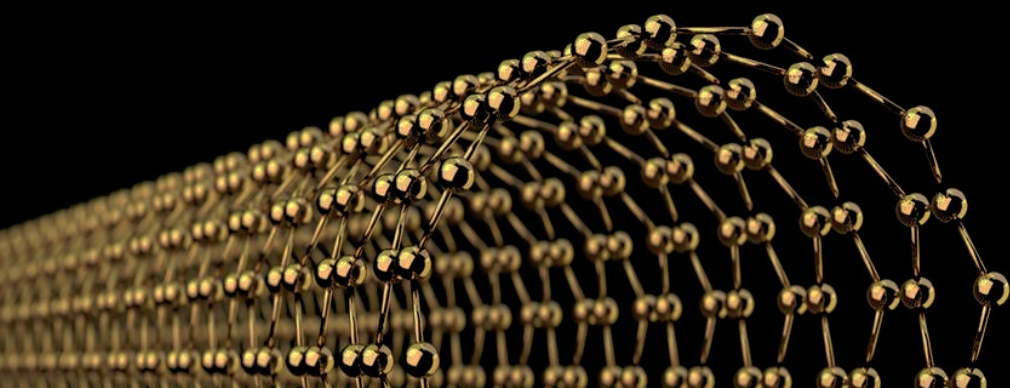
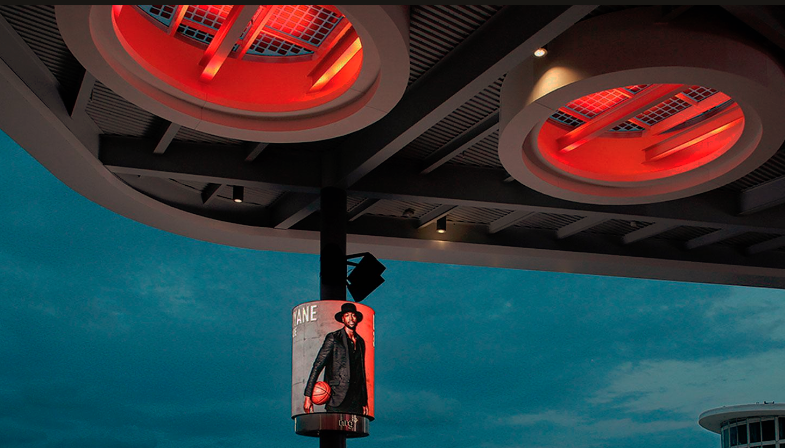
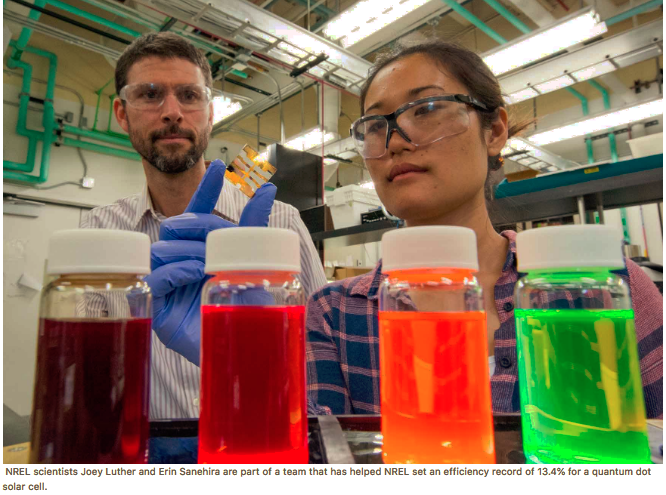
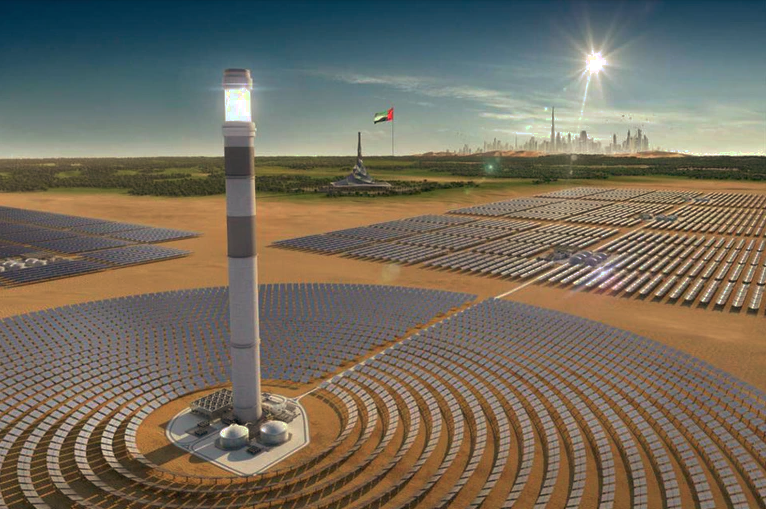
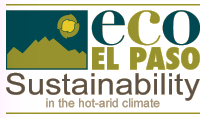
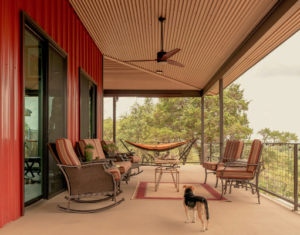
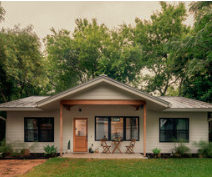
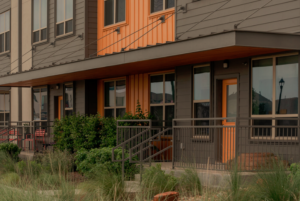

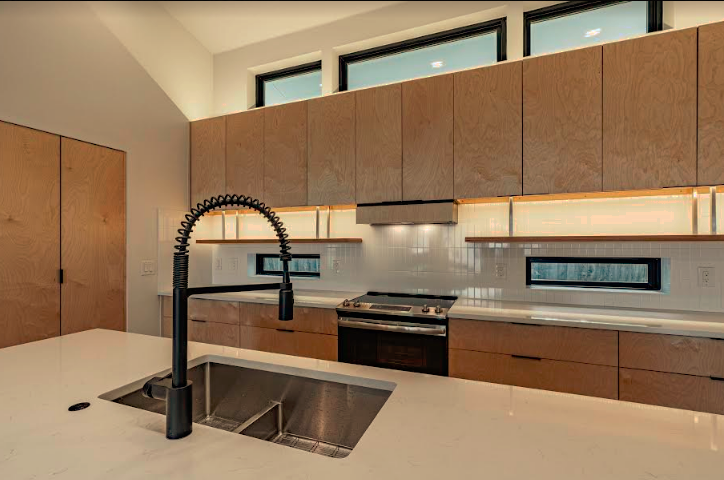
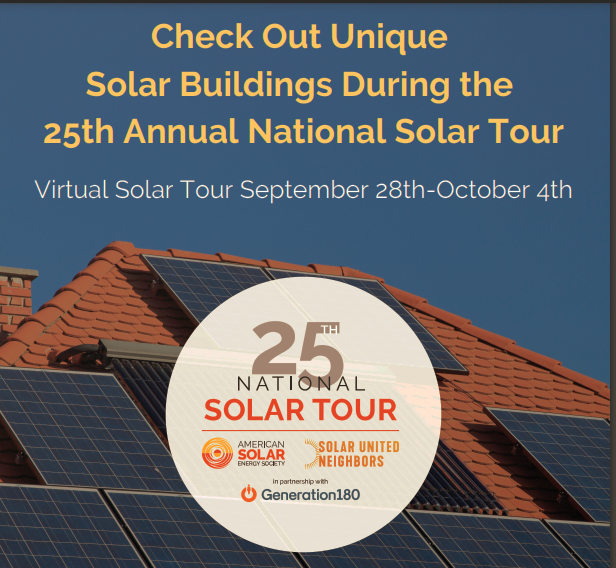
 Carly Rixham is the Executive Director for the American Solar Energy Society (ASES). She is the Editor, Publisher, and Art Director for Solar Today magazine. She received her masters in Ecology and Evolutionary Biology at the University of Colorado at Boulder where she researched microalgae for the production of biofuel. While studying in Boulder, Rixham served as Director of Arts and Sciences at CU Energy. She has taught biology and ecology at the university and high school levels.
Carly Rixham is the Executive Director for the American Solar Energy Society (ASES). She is the Editor, Publisher, and Art Director for Solar Today magazine. She received her masters in Ecology and Evolutionary Biology at the University of Colorado at Boulder where she researched microalgae for the production of biofuel. While studying in Boulder, Rixham served as Director of Arts and Sciences at CU Energy. She has taught biology and ecology at the university and high school levels.